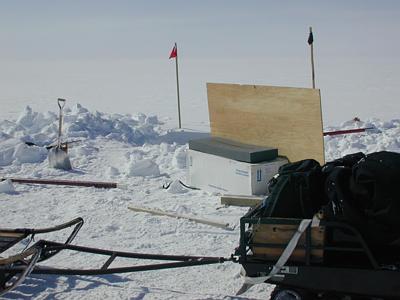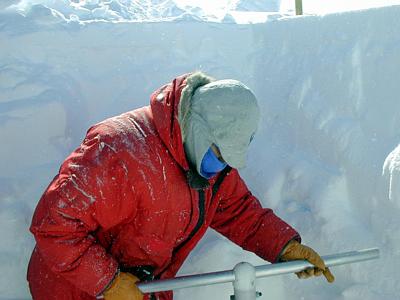
|
|
27 May, 2000
Like the patter of rain on a roof, the wind-driven snow awakened me this
morning. Although it wasn't truly colder in temperature, the wind let me
know that I should dress with another layer today, (wind chill put it at
-40 C today) especially since I was going out about 3 kilometers away from
camp to help dig a 2 meter deep snow pit. There were 3 of us going, and
since we could only take 2 SkiDoos, I got to ride on the equipment sled. We
used a saw to define the edges of the pit and snow shovels to clear the
area. Within 3 hours we had a pit 2m x 2m x 2m.
So why dig a snow pit? I was helping Dr. Eric Steig of the Dept. of Earth
and Environmental Science at the University of Pennsylvania. He and
graduate student, Dave Schneider, are studying the man-made contaminants in
snow layers and ice cores of Greenland. To access the layers, it is
necessary to dig the pit so the layers are obvious in cross-section. They
also are studying the water vapor and measuring isotopic composition to
better understand ice core records of past climates. They are making sure
what current readings of the isotopes in ice cores actually mean in terms
of what was in the air when the ice core was formed years ago. Tomorrow we
will go back and begin to take some actual readings.
Warm regards,
Besse Dawson

Sled and SkiDoo for transporting equipment to our remote snow pit.

Here I am helping to drill the ice core in our snow pit. > <>

Contact the TEA in the field at
.
If you cannot connect through your browser, copy the
TEA's e-mail address in the "To:" line of
your favorite e-mail package.
|
